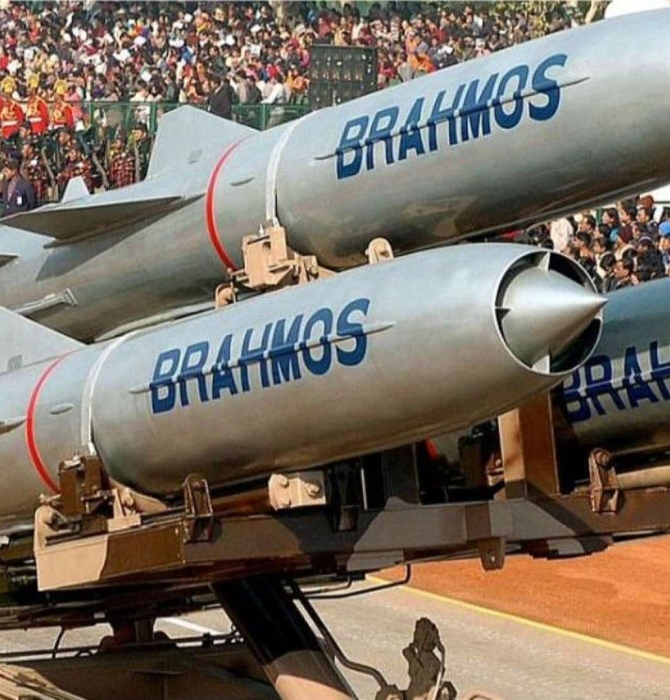7367Views

Pakistan’s Deal With PIESAT Could Signal a Civilian-Led Satellite Program Defence Uncut Podcast
Pakistan signed a $406 million USD deal with China’s PIESAT for a constellation of over 20 imaging and communication satellites, a move that signals a profound shift in its strategic posture.
The agreement, which includes a full transfer-of-technology (ToT) for in-country satellite manufacturing, is poised to provide the Pakistani military with a sovereign, persistent imaging intelligence (IMINT) capability. In this Defence Uncut episode, the Quwa team breaks down the technical underpinnings of this deal, its direct link to the new Army Rocket Force Command (ARFC), and the organizational paradigm shift it represents for Pakistan’s space ambitions.
The Technology: Formation-Flying for Near Real-Time Awareness
At the heart of the PIESAT deal is a sophisticated approach to satellite imaging based on Interferometric Synthetic Aperture Radar (InSAR).
As aerospace engineer Aseem ul-Islam explained, this technology leverages multiple satellites flying in precise formation to function as a single, giant synthetic aperture. “You fly multiple satellites in orbit in formation and you use the spread of those satellites to fake a giant aperture,” he noted, comparing the principle to the Event Horizon Telescope that captured the first image of a black hole by using radio telescopes across the entire planet.
This method has a decisive advantage: it decouples the satellite’s achievable image resolution from its orbital speed. Traditional single-satellite SAR systems face a complex trade-off between altitude, speed, and resolution. By using a formation, PIESAT’s design allows the constellation to be placed in Low Earth Orbit (LEO) – likely between 250 and 400 km altitude – enabling much faster revisit times over a target area without sacrificing image quality.
While PIESAT’s official data states a resolution of 0.5 meters, Chinese media reports indicate a larger 54-satellite version of the constellation could achieve a global revisit rate of just 60 minutes. For Pakistan, its initial 20-satellite acquisition implies a clear intent to establish a persistent regional surveillance net with revisit rates well under one day, fundamentally changing its ability to monitor adversary movements.
For more on Pakistan’s current remote sensing capabilities, see With PRSC-S1 Satellite Launch Pakistan Quietly Builds its Presence in Space.
Listen to the full episode on YouTube or your favorite podcast platform.
A Strategic Enabler for the Army Rocket Force Command
The timing and nature of the PIESAT deal are inextricably linked to the establishment of Pakistan’s ARFC. A credible preemptive conventional strike capability requires two core components: a deep magazine of munitions and a near-real-time situational awareness net for targeting. This satellite constellation directly provides the second, and arguably more critical, piece.
The panel highlighted that this capability allows Pakistan to move beyond a reactive posture. Previously, intelligence on adversary force mobilization could only be used to issue warnings, which could be misconstrued or ignored. “What the Pakistan side would have preferred was that we saw these vectors being mobilized…We tracked our air defence movements… We use that information…and we attacked them,” Bilal Khan argued. A sovereign, rapidly refreshing IMINT feed means the ARFC can independently identify, track, and prosecute time-sensitive targets like mobile missile launchers and air defence systems, giving genuine teeth to its doctrine of conventional deterrence.
To understand the broader doctrine and industrial implications of ARFC, refer to Industrial Reality Will Dictate Pakistan’s Conventional Deterrence Credibility. Also see Pakistan Has a Smart & Scalable Strike Capability it is Not Using for deeper background on how ARFC fits into Pakistan’s strike and defence postures.
A Civilian-Led Strategic Program? Why the Ministry of Food Security Signed a Satellite Deal
One of the most telling details of the agreement is that it was signed not by Pakistan’s space agency, SUPARCO, but by the Ministry of National Food Security and Research. The panel concluded this is a deliberate and pragmatic move to decouple strategic space procurement from SUPARCO, which operates under the sanctioned Strategic Plans Division (SPD).
“Being under SPD is what gets you the sanctions and the restrictions and not being able to do business with the rest of the world,” Aseem stated. By creating a new, ostensibly civilian or commercial entity to manage this program, Pakistan can circumvent these restrictions.
This new organization would allow Western and Turkish firms to supply critical sub-systems – such as ground station components, software-defined radios, and human-machine interfaces – without running afoul of sanctions regimes. The military services would then become subscribers or end-users to a national capability, rather than managing the entire vertical stack themselves.
For precedent in Pakistan’s civilian Satellite Communications (SATCOM) expansion, see Pakistan’s New Communications Satellite – PakSat MM1.
Beyond Imagery: Force-Multiplying Effects
The benefits of the PIESAT constellation extend far beyond simple target identification. The panellists identified several force-multiplying effects that will ripple across the Pakistani military.
First is the generation of highly detailed terrain maps, which are critical for modern cruise missile guidance systems like TERCOM (Terrain Contour Matching). “The better the terrain maps are, the closer the missile can fly and the less chance of the cruise missile being detected,” Aseem explained. This capability allows cruise missiles, such as the Babur and Ra’ad, to fly lower, faster, and with greater accuracy, especially in GPS-denied environments.
Crucially, Pakistan’s Babur Version-2 cruise missile already uses guidance systems like TERCOM and DSMAC, showing that missile guidance technology is improving in tandem with imaging capabilities.
Second, this deal lays the groundwork for a professional cadre of geo-intelligence officers within the armed forces, fostering a culture focused on pattern analysis and strategic assessment rather than just platform operations. Finally, the ToT for a domestic satellite manufacturing facility creates a foundation for future sovereign programs, including dedicated military SATCOM and, eventually, a national Global Navigation Satellite System (GNSS).
Complementary to space-borne ISR platforms are airborne systems. The GIDS Shahpar-3 Unmanned Aerial Vehicle (UAV), with SAR, EO/IR, ELINT/COMINT payloads and long endurance, shows what Pakistan is already doing in UAV-based surveillance.
Also, the GIDS Burq-25G/-45P/-50P Air-to-Ground Missile family illustrates Pakistan’s increasing precision in strike munitions that will benefit from higher quality IMINT.
Listen to the Full Discussion
If you have any questions, comments, or news topic suggestions you would like to hear us discuss, then send us an email at podcast@quwa.org.


